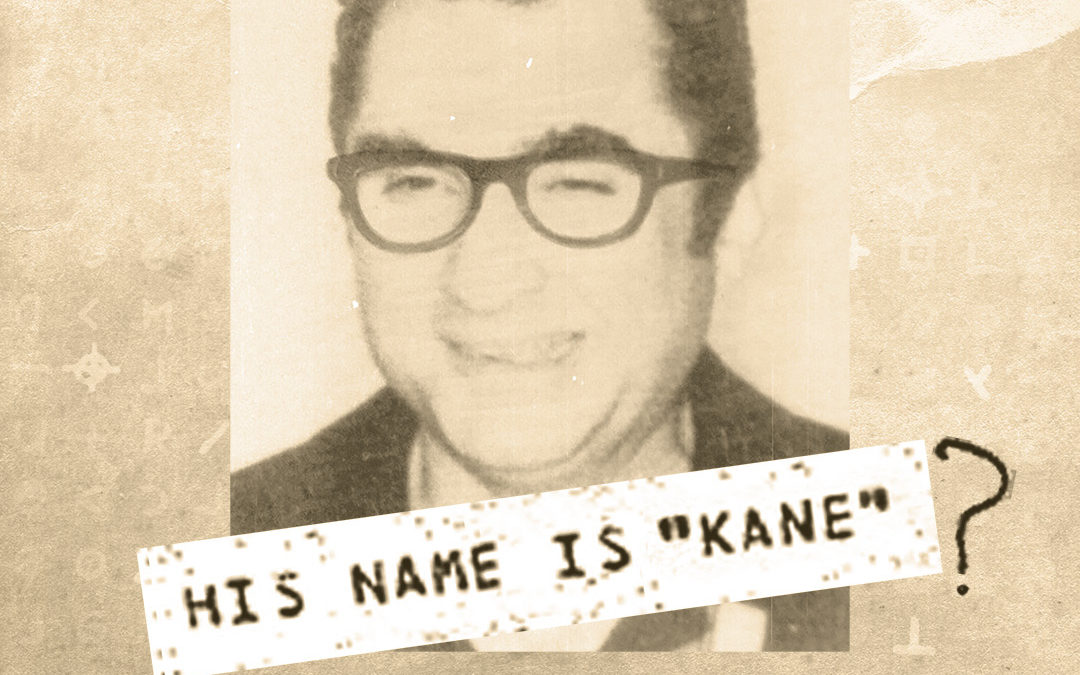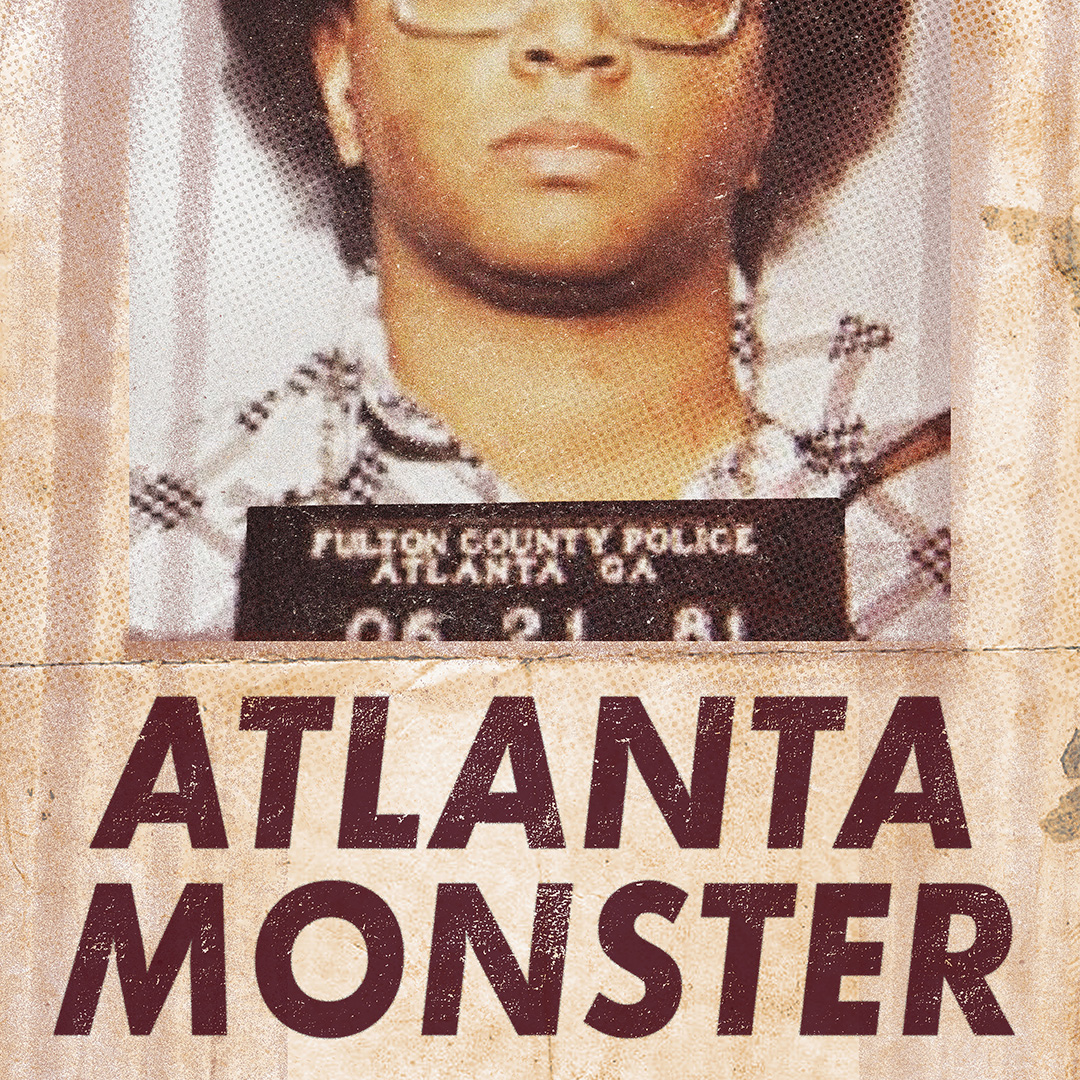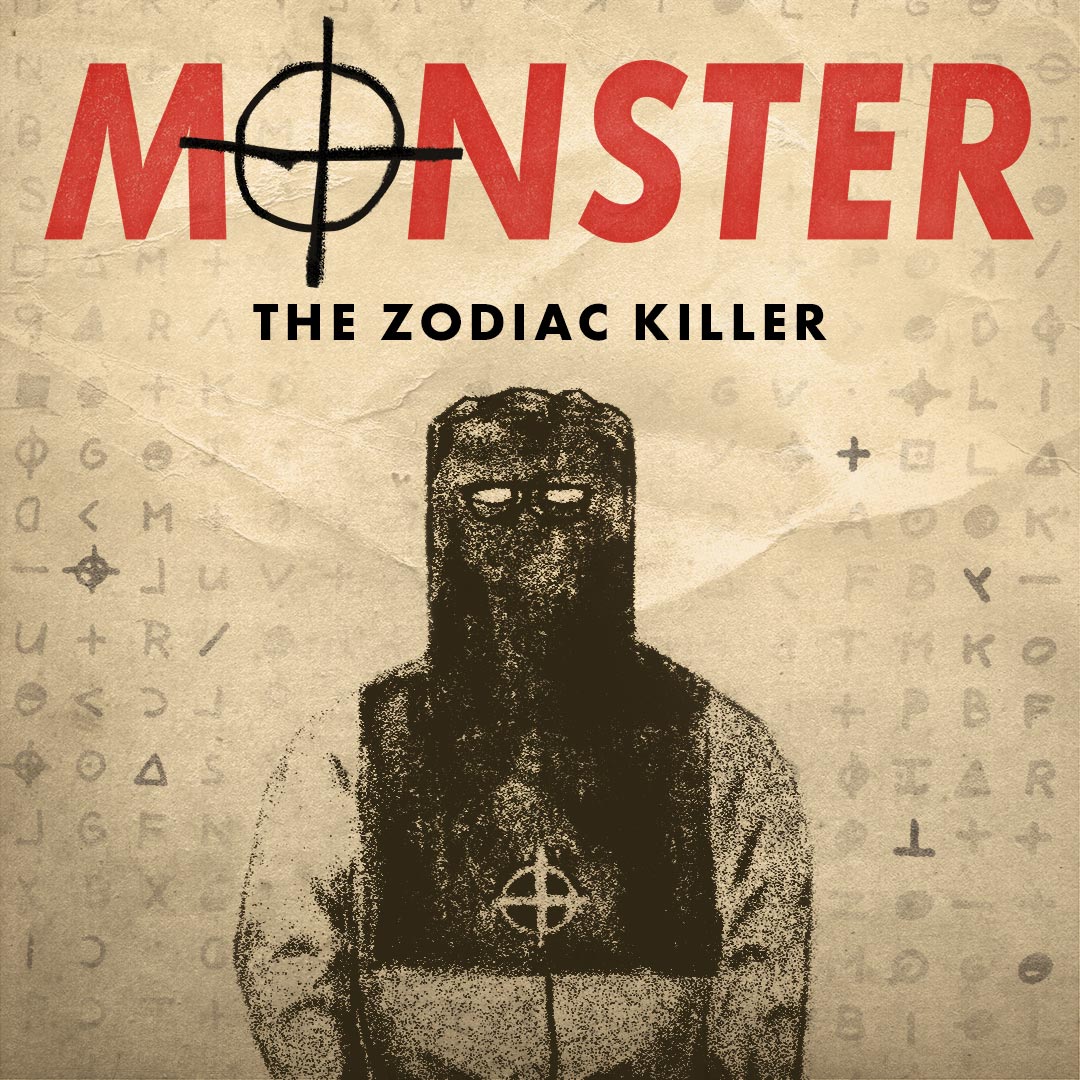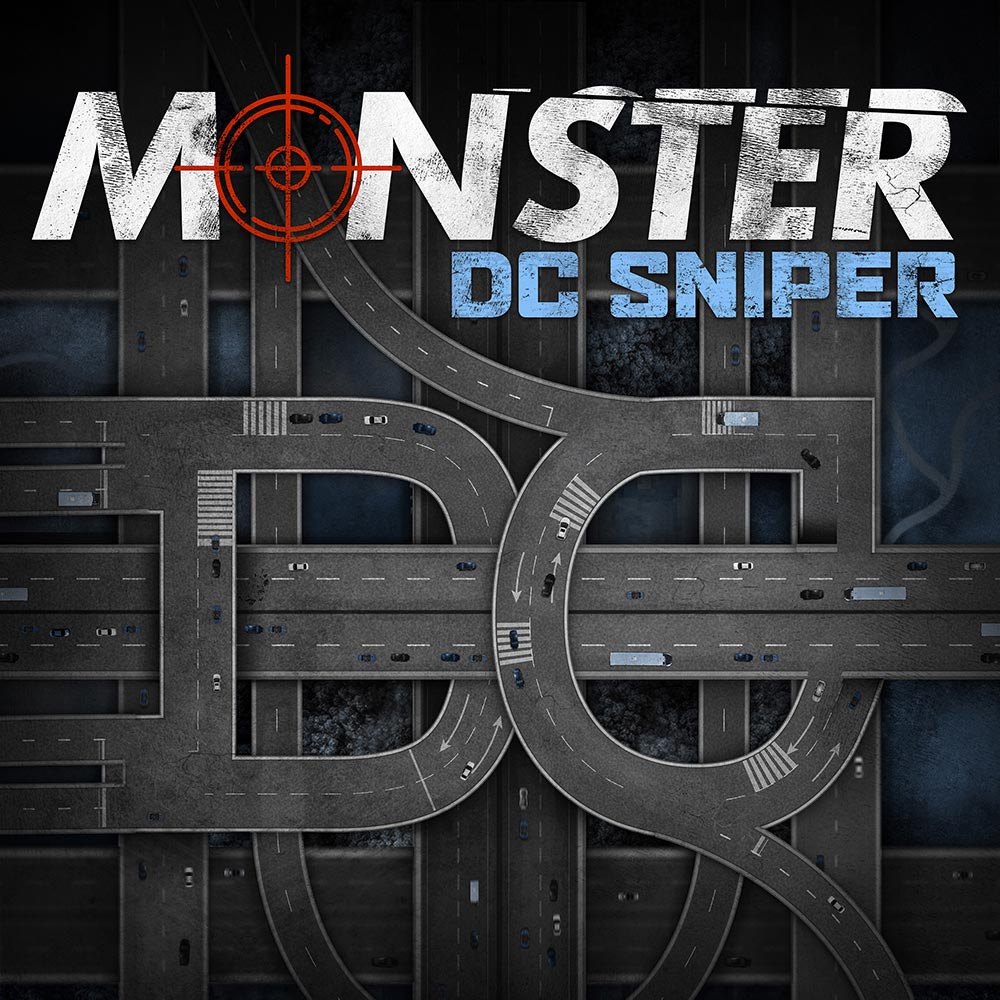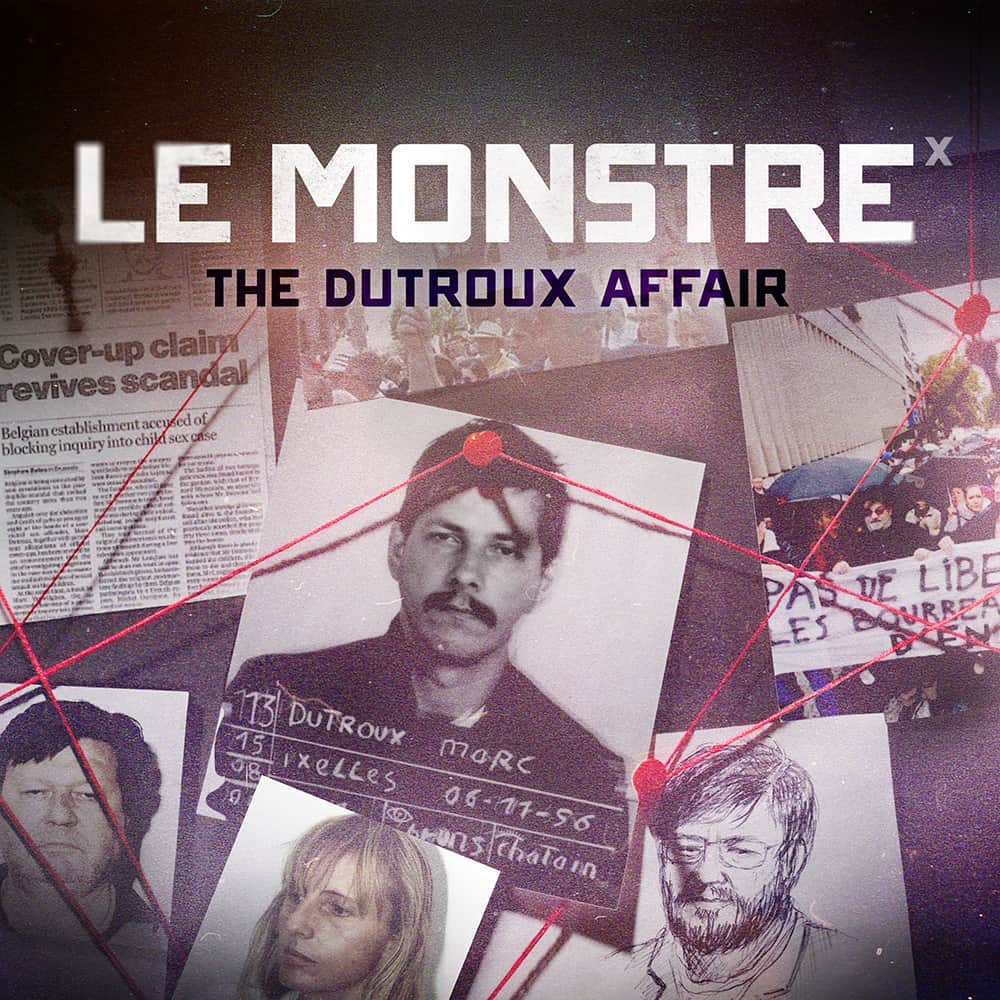11 • Trails
Toschi’s investigation led to a dead end, but independent investigators are chasing down other leads.
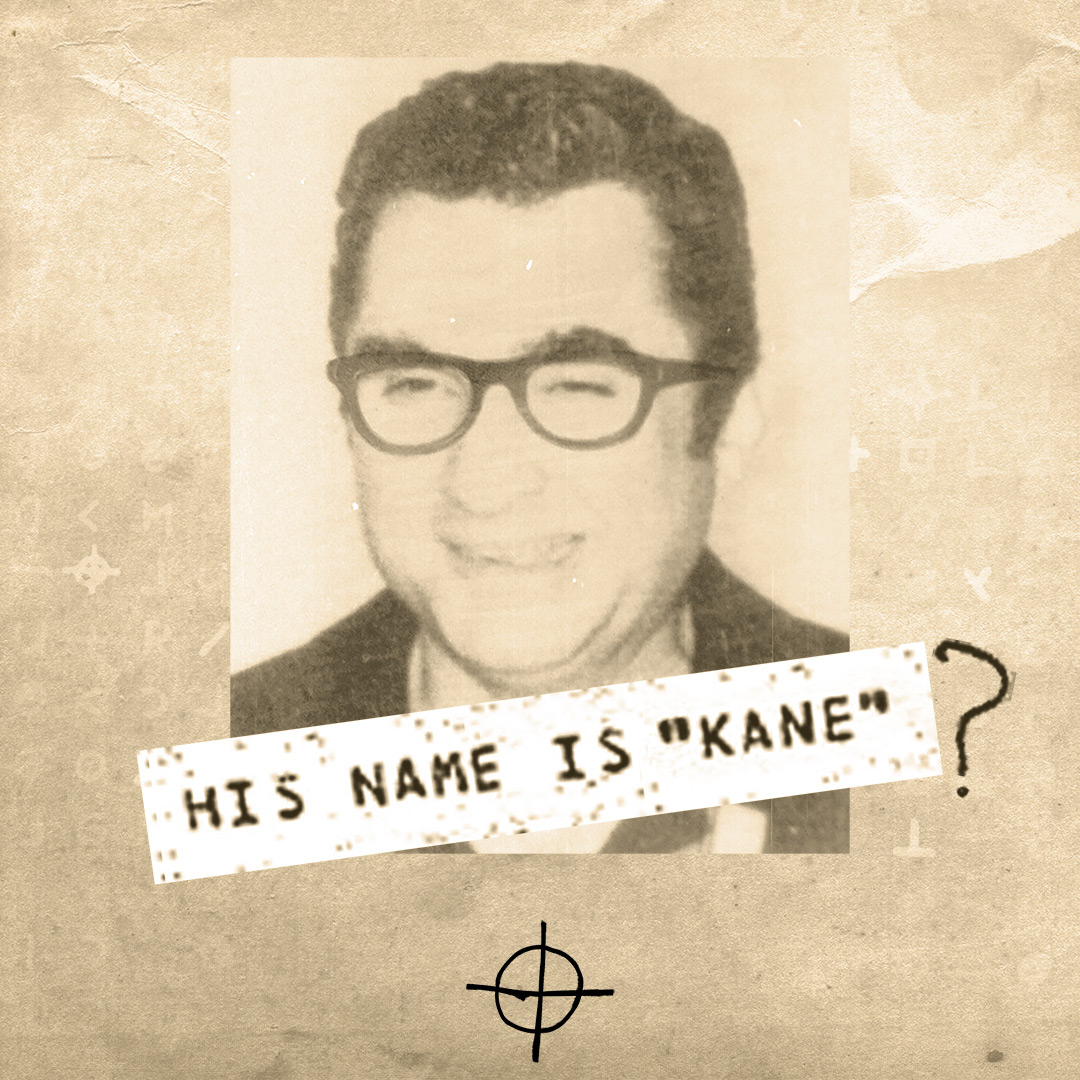
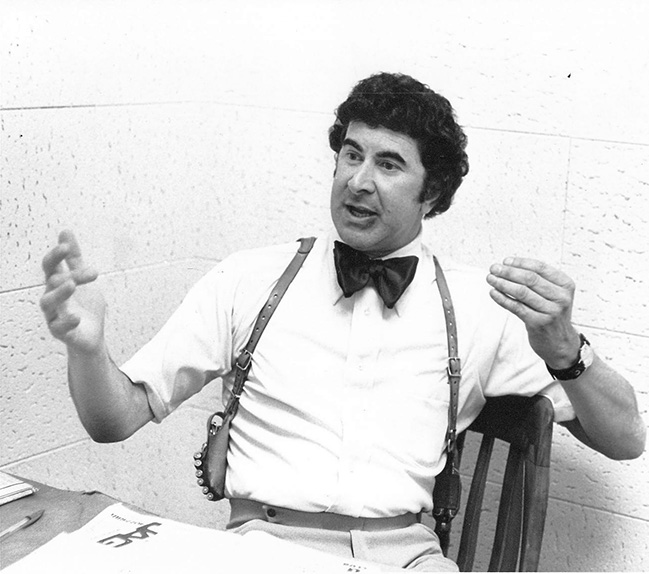
A copy boy named Brant Ward walks up to my desk with an envelope in his hand, and he said “Hey, take a look at this. Does this look familiar to you?” It went off like a flash, “Oh my goodness, that definitely looks like Zodiac.”
– Duffy Jennings, SF Chronicle reporter
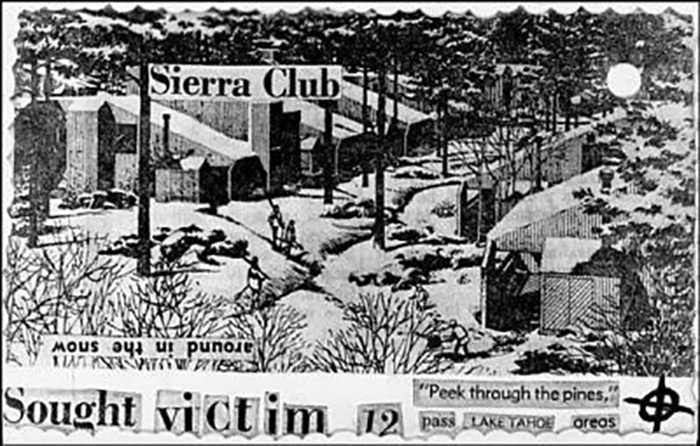
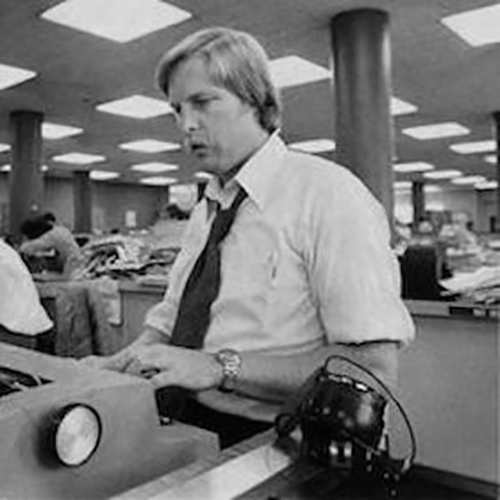
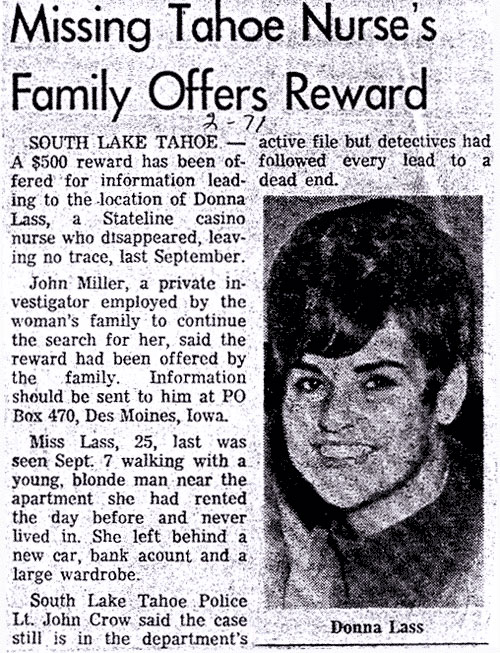
There is no question in my mind that my suspect is the Zodiac. Every fiber, every part of my being tells me that he is the Zodiac Killer.
– Harvey Hines, Police Officer on his suspect Larry Kane
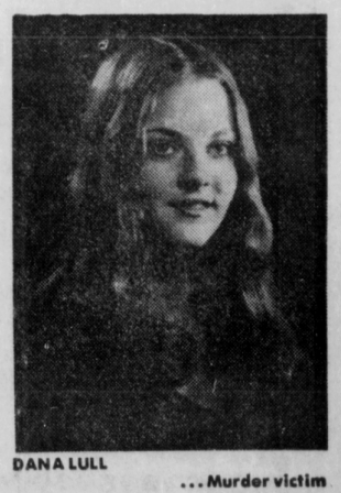
That night, an unidentified man called Lull’s parents and told them, “Your daughter’s dead.” Two weeks later, Lull’s body was found.
Transcript
Speaker 1: The views and opinions expressed in this podcast are solely those of the podcast author, or individuals participating in the podcast, and do not necessarily represent those of iHeart Media, How Stuff Works or its employees.
Duffy Jennings: I spent a week on call with Toschi and Armstrong. Going to murders with them in the middle of the night. I thought it was pretty amazing to know what it was like to actually be a homicide cop. I mean it’s pretty gritty. I’d get a call at three in the morning, it was Toschi saying “Meet us at such and such.” I’d go out in the Mission District, and there’s some guy laying there with a knife in the middle of his belly. I loved it, I mean I thought it was, I loved that stuff. Toschi was so unique. He and Armstrong were nothing alike. Armstrong was by the book, very reserved. Toschi had a flair, and he was much more of a dynamic, sort of interesting, real gregarious kind of guy.
Speaker 1: That’s Duffy Jennings, the former reporter at the San Francisco Chronicle. He worked with detective Dave Toschi, the lead Zodiac investigator for the San Francisco Police Department. Toschi’s personality and style won him attention, but it also put him in the crosshair’s. The Zodiac had gone quiet, and press coverage of him had all but disappeared. That was about to change.
Duffy Jennings: In April of 1978 Zodiac had not been heard from for four years. There’d been no letters, but just in case the newspapers still put samples of Zodiac’s earlier letters, and envelopes tacked onto the mail slot cabinet where the copy boys sorted the daily mail. Just in case they saw anything that remotely resembled these old letters. So in 1978 in April one morning, the copy boys are sorting mail, I’m at my desk. I haven’t even thought about Zodiac for a long time. A copy boy named Brant Ward walks up to my desk with an envelope in his hand, and he said “Hey, take a look at this. Does this look familiar to you?” It went off like a flash, “Oh my goodness, that definitely looks like Zodiac.”
continue reading
Speaker 2: A man in a mask robbed, tied and stabbed them, leaving them for dead.
Speaker 3: Subject stated, “I want to report a murder. No, a double murder. I did it.”
Speaker 4: A man who wore a medieval-style executioners hood, carried a knife and gun and intended to use them.
Speaker 5: They haven’t arrested me because they can’t prove a thing. I’m not the damn Zodiac.
Speaker 2: Who is the Zodiac and where is he?
Speaker 1: From iHeart Radio, How Stuff Works, and Tinder Foot TV, this is Monster: The Zodiac Killer. The Zodiac craved attention, and the media obliged him. Even the major detective, Dave Toschi and his suspect, Arthur Lee Allen, received their share of the spotlight. Their stories provide an important lesson to other investigators. The independent investigators, who hunt for the Zodiac on their own, exploring leads that others ignore, finding new suspects that had previously escaped notice, and making connections that others dismissed as coincidence.
Duffy Jennings: I got on the phone to call Dave Toschi. I couldn’t reach him, he was out of the office. He came back to the office, and they told him “You have a call from Duffy at the Chronicle. He thinks he has a Zodiac letter.” So he came down and together we opened the letter.
Speaker 4: Dear editor, this is the Zodiac speaking. I am back with you. Tell Herb Keen I am here. I have always been here. That city pig Toschi is good, but I’m smarter and better. You’ll get tired, then leave me alone. I’m waiting for a good movie about me. Who will play me? I am now in control of all things. Yours truly. Zodiac, guess. San Francisco Police Department, zero.
Duffy Jennings: He said, “I’m going to take it over to Paul Shimoda for verification.” Paul was the documents expert at the US Postal Service. An hour or two later and said: “Shimoda says it’s the guy.” We did a story. Zodiac is Back, with his usual taunting of police for failing to catch him, and some reference to that city pig Toschi.
Speaker 2: San Francisco police displayed a blackboard with excerpts of the latest Zodiac letter. Police are convinced it’s authentic. Deputy San Francisco Police Chief Clem Diamicas said: “It’s the 16th letter received from the Zodiac killer and the first since 1974.” Letter number 16 has breathed new life into the investigation of at least six murders blamed on the Zodiac. Old files will be reviewed again. For the last nine years, the Zodiac investigation has been headed by homicide inspector David Toschi.
Dave Toschi: I have always felt, my gut feeling, that he was not dead and that he was out there somewhere, and that he would communicate. I was always hoping that he would communicate and not commit an act. A letter I can handle.
Duffy Jennings: It was a front-page story, Zodiac had not been heard from for four years. What happened after that was we had a column going on in the paper at that time, a serialized fiction column called Tales of the City. It was being written by a writer named Armistead Maupin.
Speaker 1: Maupin’s column included a character based on Detective Dave Toschi. He’d sometimes receive fan mail about that character. Anonymous fan mail that Maupin suspected had been written by Toschi himself.
Speaker 2: Toschi is under fire for writing phony fan letters about himself to a newspaper feature writer. Maupin today came up with far more serious charges, that there are similarities between the letters Toschi admits writing to Maupin and the most recent Zodiac letter of last April.
Armistead Maupin: I received the bogus fan letters in the fall of 1976. I took no official action on them at the time because I regarded them as harmless, as a harmless, if somewhat reckless action on the part of a police officer. I chose to turn the matter over to police only when I noticed certain similarities between the tone of the letters and the tone of the last Zodiac letter.
Duffy Jennings: Because there had been no Zodiac news for four years, there were people who thought this was Toschi trying to regenerate interest in the case and attention on him. An investigation ensued internally in the police department. Toschi was questioned about this, he denied that he’d written it. He acknowledged that he had written anonymous notes to Armistead Maupin. His credibility was called into question. The police chief removed him from the homicide detail, put him back in robbery and pawn shop detail, and it was the beginning of the end of his career on the San Francisco Police Department. This letter and the suspicions around it tarnished his credibility.
Ultimately he retired out of the force has never caught the Zodiac and under a cloud of suspicion that was some of his own doing. I know Dave started to go downhill after that emotionally because he’d investigated over 100 murders in his career and had all this attention. Dave had become an icon of his own. He wore an upside-down shoulder holster. He wore bow ties. He had his favorite snack, this trademark box of animal crackers. He had a persona that was gregarious. He was an Italian kid, grew up in San Francisco. You know, it’s sad because he loved the attention, but I don’t think it affected his work on a day to day basis. I don’t believe he ever did write a Zodiac letter. I just don’t, I just know him well enough to know that that wasn’t true, but he became reclusive after that.
Speaker 6: This much can be said with certainty, there is no official police clamp on Inspector Toschi talking with the media. That matter is entirely up to him.
Duffy Jennings: He would never talk to another media person beside me. He would tell the story about going back to the Paul Stein crime scene every year on the anniversary to reflect on it. He was candid with me about how it ate at him that he’d never caught the guy.
Speaker 1: Dave Toschi died on January 6, 2018. Toschi is survived by his wife, his two daughters, and two granddaughters. Toschi died convinced that Arthur Lee Allen was the Zodiac, and haunted by the fact that he was never convicted of the crime. Toschi’s story of obsession is familiar with many cold case investigators. He’s not the only one to get swept up in the Zodiac case, and Arthur Lee Allen wasn’t the only promising suspect. Ed Rust was the Vallejo Police Officer on duty when Darlene Ferrin was shot and killed at Blue Rock Springs Park. For years, there had been no progress in the case, but then, through a chance meeting at a conference, a suspect would finally catch Rust’s interest.
Ed Rust: They had a guest speaker who was going to do a presentation on the Zodiac Killer. A man named Harvey Hines, H-I-N-E-S, who was actually a police officer. His investigation, it started out as a term paper in one of his police classes, and I believe this was somewhere around in the early 1970s he began investigating the case on his own and became absorbed in it. When I met him, this was in the early 90s, so he had been working on this case and following it on his own time for all these years, and had developed a suspect he felt was the Zodiac Killer. A man named Larry Cane
Speaker 1: Harvey Hines was absolutely convinced that Larry Cane was the Zodiac.
Harvey Hines: There is no question in my mind that my suspicion is the Zodiac. Every fiber, every part of my being tells me that he is the Zodiac Killer.
Ed Rust: He initially identified him when he went to South Lake Tahoe, where Donna Lass had disappeared.
Speaker 1: Donna Lass was a night shift nurse at a casino in Lake Tahoe, she’d recently moved there from San Francisco. Then on September 6, 1970, after finishing her shift at two AM, Lass disappeared. The next day a man called her work and her landlord and told them she’d left suddenly because of a family emergency, and wouldn’t be coming back. Lass’ car was parked in front of her apartment, and there was no family emergency. Police searched her apartment, they found no signs of struggle or anything suspicious, but her possessions were all there, and they suspected foul play. Lass was never seen again, and her body was never found. Six months later, on March 22, 1971, a postcard arrived at the San Francisco Chronicle with the Zodiac symbol in the corner. It was addressed to reporter Paul Avery in scrawled writing. Attached to the postcard was an image, a winter scene from a condo development ad, and words clipped from newspapers.
Speaker 4: Sierra Club, around in the snow. Sought victim 12. Peeked through the pines. Passed Lake Tahoe areas.
Speaker 1: Police and media quickly connected this postcard with Lass’ disappearance. Harvey Hines learned in his criminology class that the crime was still unsolved. Lake Tahoe was only a few hours away, so he drove out to investigate himself. Hines went through the Lake Tahoe police records and started collecting information that he’d later compile into an extensive report. The following are excerpts of his report, read by a voice actor.
Speaker 7: I reviewed the two South Lake Tahoe supplemental police reports filed on March 25, 1970. Both subjects came forward after seeing a television newscast stating the Zodiac Killer had sought his 12th victim in the Tahoe area.
Speaker 1: Two women had filed police reports after wondering if a strange man they’d encountered might be the Zodiac Killer. The first report was filed by Mary Highlander, a blackjack dealer. At an IHOP Mary met a man with horn-rimmed glasses. He offered to read her horoscope. Telling her, he was an expert at the Zodiac. He said the reading would take time and asked for her number. When he called her later, he told her that he had to give her the reading in person. Mary arranged to meet him at her house, but something felt off, so she invited her friend Nancy over. When the man arrived, he seemed annoyed at Nancy’s presence.
Speaker 7: He looked at Nancy, indicating that he wished she would leave him alone with Mary. Nancy stayed, fearing to leave her friend alone with the subject. He stated he had recently read a chart of a murderer and continued talking about this subject. Seemingly preoccupied with death. The man was very evasive about questions asked of him by both women.
Speaker 1: Another woman reported a strange encounter that also occurred around the time of Donna Lass’ disappearance. That woman, who wished to remain anonymous, said that a man sat down next to her at a pizza parlor and struck up a conversation about Zodiac signs. He told her he sold real estate and said that a woman he’d been watching at work would “Be sorry for rejecting him.” The anonymous woman at the pizza parlor felt unnerved and made up an excuse to leave.
Narrator: … pizza parlor felt unnerved and made up an excuse to leave. Hines was intrigued by the police reports, so we interviewed three of Lass’ former coworkers. He asked if there was anyone in Lass’ life who seemed suspicious or had shown a particular interest in her.
Harvey Hines: I asked the same basic questions of each person I spoke with. Without exception, each person promptly gave me the name of Larry Kane. They all agreed Kane and Donna Lass knew each other. They said he was mostly a loner. They described him as being strange. He was 40 to 45 years old, had dark hair, wore horn-rimmed glasses, and had sort of a pot belly. I asked if they knew who he worked for now, and they stated they did not know but thought perhaps for an Allen M. Dorfman, the manager of Arizona Real Estate at the time that the victim, Lass, disappeared.
Narrator: Although Hines was working the case in his free time, he used his connections as a police officer to determine Kane had moved to Lake Tahoe from San Francisco right around the time of Lass’ disappearance. Kane had multiple Social Security numbers and names on file. He’d been arrested 10 times between 1946 and 1968, including for battery. A probation report from 1964 said Kane had sustained brain damage after a head-on collision with a cement truck. The report said his injury was serious, and that his recent involvements with the law indicated a “lack of control in self-gratification.” Scientific studies show that people who’ve experienced head trauma can become more likely to commit violent crimes.
Hines now had a suspect, but he still had no clue what happened to Donna Lass. He turned back to the Zodiac’s card. What did it mean? “Past Lake Tahoe areas,” and why did it say “Sierra Club”? Were those phrases clues as to the location of Lass’ body?
Harvey Hines: After leaving the police department, I spent several hours studying the postcard and driving around the lake. I began to notice several signs marking local ski areas, and the postcard made a reference to areas.
Narrator: He decided to follow the postcard’s directions. He drove out of Lake Tahoe, passed the ski areas, and spent hours trying to find a location somehow related to the Sierra Club.
Harvey Hines: I drove North of Lake Tahoe and found the Clair Tappaan Lodge. It was a private club for Sierra Club members only. After getting out of my car and walking up the driveway, I realized the scene was not unlike the picture depicted on the Zodiac postcard. I took pictures of the area without making contact with anyone at the club. I then left and returned to my motel room. I believed if I followed the directions on the postcard, I would find Donna Lass’ grave. I believed she was buried near the Sierra Club.
Narrator: Hines had now identified Kane as a suspect, and he had located a Sierra Club outside Tahoe that matched the postcard’s description, so Hines returned to the club to investigate. He learned that the town’s old postmaster, Mr. Fredericks, had stumbled upon a strange area out in the woods behind the club. Fredericks said he thought it was a burial site made out of logs.
Harvey Hines: He described it to me as a circle 14 feet in diameter, and within the circle was a six foot by six foot square with a triangle within. All these made by careful placement of logs. Within the triangle was a cross, like that of a grave marker, made from 13 stones. Mr. Fredericks related that he was very frightened, but he was convinced it was a grave site and took pictures of it.
Narrator: The postmaster led Hines out to the site.
Harvey Hines: We dug a cone-shaped hole within the center of the six by six-foot area to a depth of approximately four to five feet. No human remains were located; However, indications were that at some earlier point in time, the ground had been disturbed down several feet. At this point, because of lack of time, I had to return to Sonora.
Narrator: But Hines wasn’t ready to give up. He was still convinced that Kane was a promising suspect. Hines learned that shortly after Lass’ disappearance, Kane has moved to Las Vegas, and so Hines, too, went to Las Vegas to investigate. He asked law enforcement there if any crimes in the area had matched the Zodiac’s MO.
Harvey Hines: Sergeant Anderson related the following information: On Sunday, April 27th, 1974 at approximately 10:36 PM, Victim Lull, accompanied by her boyfriend Roy, were in a Lover’s Lane area of Red Rock Canyon. While they were parked, a vehicle approached from the rear.
Narrator: According to the boyfriend, the car was a white convertible with a black cloth top, and it was missing its front grill. A man got out of the convertible and approached their car. He was wearing horn-rimmed glasses and black gloves, and he was holding a pistol.
Harvey Hines: He then ordered Roy and Lull out of their vehicle at gunpoint. Roy complied, but the victim remained in the vehicle. The suspect then went to the passenger’s side to remove the victim. While he was occupied, Roy fled and hid in a ditch.
Narrator: The suspect coerced Lull into his car and drove off. That night, an unidentified man called Lull’s parents and told them, “Your daughter’s dead.” Two weeks later, Lull’s body was found. She’d been dropped down a mineshaft 125 miles away in San Bernardino County, California, and it appears Lull’s killer may have barely escaped capture, at least according to an investigative technique that has become controversial.
Harvey Hines: A Nye County deputy sheriff, who felt he had made a stop on the suspect’s vehicle, was placed under hypnosis recounted the following information: The vehicle bore a California license plate. The deputy recalled the suspect getting out of his vehicle. He described the driver as being heavily tanned, wearing a sports type jacket, horn-rimmed glasses, and black leather gloves. He further related there seemed to be something strange about the female passenger. He stated, “She was very still and never turned around to look in his direction or made any movement.”
Narrator: The encounter took place in the middle of a desert outside of Radio Range, so the deputy hadn’t called in the man’s license plate, and no bulletin had been issued about Lull’s abduction because police had initially been skeptical of her boyfriend’s story. So, the deputy let the mango with just a warning. A month later, the boyfriend thought he spotted the killer at the Spring Inn and called the police, but by the time the police arrived, the suspect had left.
Hines looked to see if Kane could be connected to this killing. He discovered that Kane lived just down the road from the Spring Inn. What’s more, Hines said that Kane’s old boss, Allen Dorfman, told him that Kane often went to the Spring Inn, and according to DMV records, Kane had owned a white convertible with a black cloth top at the time of Lull’s murder.
Hines suspected Kane was responsible for the murders of both Donna Lass and Dana Lull. He felt it all lined up too well to be a coincidence. The horn-rimmed glasses, the white convertible, the sighting at the Spring Inn … But even if Kane killed Lass and Lull, was he the Zodiac? As Hines continued to investigate, the coincidences piled higher and higher.
Kane had not only been living in San Francisco during the Zodiac murders, but he lived just a few blocks away from where cab driver Paul Stein had picked up the Zodiac. He had traded in a car six days after Darlene Ferrin was murdered in Vallejo and acquired a tan sedan similar to the car used to abduct Kathleen Johns and her infant daughter. And it wasn’t just Kane’s whereabouts and his vehicles that seemed to line up. Some of the suspected Zodiac victims like Kathleen Johns thought Kane was the Zodiac. Johns identified Kane out of a lineup of 18 photos.
Harvey Hines: I asked, “Are you sure?” And she said, “Yes, and it’s not just my eyes telling me. I know it in here.” And she clenched her blouse with her fingers knotting into a fist and pushing into the pit of her stomach.
Destry Hines: I’m Destry Hines, and I’m Harvey Hines’ son. When I was growing up, my dad was talking about the Zodiac since as early as I can remember. In the later ‘90s, that’s when I actually started paying more attention to it, and my father and I had sat down and started looking at the fingerprints from the Lake Berryessa killings.
Narrator: After stabbing Cecelia Shepard and Bryan Hartnell at Lake Berryessa, the Zodiac wrote the dates of his killings and his symbol on the door of their car.
Destry Hines: Apparently he had squatted, and his left hand left four prints on the window on the car, so my dad had those prints and his suspect, Lawrence Kane, Larry Kane, he had been arrested for being a peeping Tom. My dad had the booking prints from that. I scanned them in and used Photoshop to overlay and align the prints, and what we saw was a very distinct, very convincing matchup of those prints.
My dad made an appointment with one of the investigators at the Vallejo Police Department, and we went up there and met with them, and we showed them the prints. He said that they weren’t able to confirm that it was Larry Kane or that the prints matched, but it also didn’t discount them. In other words, it could very well have been the same person, but there just wasn’t enough print evidence there to be able to make a definite match.
Narrator: We wanted to know just how good this fingerprint evidence was, so we spoke to Dr. Kimberly Moran. She’s the Director of Forensic Science at Rutgers University, Camden. We sent Dr. Moran a digital version of Kane’s booking fingerprints from when he was arrested and the latent prints from the car at Lake Berryessa.
Dr. Moran: I’m basically flicking back and forth between the booking print and the latent prints. So, looking at the latent fingerprints. They are pretty poor for glass, because glass is usually a great substrate, and these are very, very faint. Is there enough data within that fingerprint? Can you see enough of the ridges and the individual ridge flow? I mean, the right little finger I would rank as no value. The right ring finger I would say, yes, it had value. I can definitely see that this is a whirl. I can count individual ridges.
The right middle finger, yes, I would also say that’s a print of value. The right thumb, there’s too much uncertainty, but all you need is one finger. You don’t need any more than that, so let me look at the booking prints. Okay, so what this person has marked out on the right ring, they’ve marked out a scar at the top of the fingerprint, they’ve marked out two bifurcations where a single ridge splits into two separate ridges. Let me just compare the two. Looking at the latent fingerprints, I really do not see the scar or these bifurcations.
I mean, there’s one that maybe I could be talked into, but one point of agreement is just not enough to say that these two fingerprints are the same. These probably are not from the same source. I don’t feel like there’s enough data to say for certain that they’re not from the same source, but from what little I can see, I do not think that they are from the same source.
Narrator: Harvey Hines compiled a report with all of his collected evidence, but no one would take it seriously. The San Francisco police were focused on Arthur Leigh Allen, and when Hines shared his report with the FBI, they seemed interested at first, but nothing came of it. Here’s Harvey Hines’ son Destry again.
Destry Hines: One of the interesting things was when a new FBI agent would contact my dad, they’d be interested in the story, they’d be investigating it, they’d wanna know who my dad’s suspect was, more about him, why he thought that the suspect was the Zodiac, and they were always really excited about, “Oh, wow. This is great information. I’m gonna follow up soon as I get back to the office. I’ll give you a call, and we’ll move this forward.” And they would just go away.
Speaker 8: … they would just go away, and my dad would try to call them up and say, “Hey, yeah. Have you followed up on any of this or what’s happening with it?” and they just wouldn’t be able to talk about it, so my dad was starting to wonder if Larry Kane turned witness on someone because he was part of the Mob. He may have turned somebody in, and they put him in the protection program. Once you go in there, there’s limits to what the FBI can do when they start investigating you.
Speaker 9: The Mafia connection sounds outlandish at first, but remember Kane’s old boss, Alan Dorfman? Dorfman was linked to organized crime. He was indicted by a Federal grand jury in 1981 and convicted of conspiracy to bribe a senator. Three days before his sentencing, he was shot and killed, presumably to prevent him from cooperating with authorities. However, it was difficult to either confirm or disprove that Dorfman was actually Kanes’ old boss. That was information we could only find in Hines report.
Rider McDowell: It’s like Larry Kane, he was probably a hit man for this syndicate of real estate developer person. Not like real estate developers who take it today, but guys that were backed by the mob out of the gambling world.
My name is Rider McDowell, and many years ago, I was an investigative reporter and covered a lot of interesting crimes. I seemed to pursue the psychopaths. They are the boogymen, but they don’t look like it. When somebody is exposed as being a mass murderer, it’s just like fascinating.
Speaker 9: Rider McDowell met Hines in the 1990s, and he wrote a long piece about him for the San Francisco Examiner.
Rider McDowell: Somebody had called me up and said, “Rider, there’s this guy that thinks he’s caught the Zodiac Killer.” I had coincidentally recently read that Robert Graysmith book called Zodiac, and was really intrigued.
Harvey was a really driven guy, kind of shy. There was a sadness around the guy. He felt that people were mocking him and no one would take him seriously, so I did. I think Harvey was a bit of a crusader, you know? He had this quixotic view of good and evil, you know? He was going to get this guy because this guy was the ultimate bad guy. Early on, the name Kane was floated, and it did make sense in terms of the woman in South Lake Tahoe, and it started to make sense in terms of the taxi driver killing and other things.
What’s clear is that the guy, Larry Kane, really was an odd person, you know? He was up to something.
Speaker 9: One time, Kane asked a female real estate agent to show him a house out in the middle of the desert.
Rider McDowell: She went out there to show this house, and there was nobody there, but she went into the house looking around. You know, you’re in the middle of nowhere. Really vulnerable and he realized, you know, well I should have been more careful. Then, this thing shows up. A hearse pulled up, and it was the guy from the mortuary. He said, “Well, I’ve had a call here to pick up a body.” It was just so creepy, and this so freaked out this woman that she just quit her job and Larry Kane was just a creepy, odd character. It’s full of stories like that.
Speaker 9: Rider wanted to get Kane’s side of the story, but Kane kept a low profile.
Rider McDowell: I’d finally got his number, and I’d got it in some clever way. It was unlisted, and he had this kind of recording that you could buy that had Alfred Hitchcock.
Speaker 9: Rider prepared himself to talk with the man he thought might be the Zodiac Killer.
Alfred Hitchcock: Good evening! This is your old friend Alfred, leave your name and number, and we’ll return your call after this brief interruption.
Speaker 10: [Woman screaming]
Rider McDowell: It was so chilling. That really was uh … oh, that. I’ve almost forgotten it.
Speaker 9: Eventually, Rider did meet Larry Kane, and Kane denied being the Zodiac.
Rider McDowell: I interviewed Kane one time. He was a very creepy guy, but not so you necessarily noticed if you were behind him in the store or something. I don’t know what his life was like, but he lived in this condo. Would walk around and go into town and have coffee, and his voice was so … it had this Brooklyn accent. This New York accent. It seemed to me that, that would have been noticeable in either the phone calls to the cops or at Lake Berryessa.
Speaker 9: But, Rider says one time he played a recording of Kane’s voice to Bryan Hartnell, the survivor of the Lake Berryessa stabbing.
Rider McDowell: He said there were some similarities to it because it was a little bit of a hiccup. Kane, he would not stutter, but it was a little kind of pause. But, I am confident it wasn’t Larry Kane. Harvey Hines did have a certain amount of tunnel vision, which was fascinating because he seemed to have changed upon this other bad guy. You know, he had been a peeping tom for years and some kind of gun story that he pulled a gun on a couple of people. Do you know? He was up to no good.
It all added up to be a really odd character that’s probably capable of murder, but it was frustrating dealing with Harvey because, in the beginning, he would get a clue. Somebody would tell him something, and then he would just go there, and he wouldn’t cover all of his steps, so I couldn’t really unwind this and go back and see, well who did you talk to there? What was this? Because I was really going over this with a fine-toothed comb.
I don’t think he fabricated anything. I think he just was so overzealous that he would go to the next thing and the next thing. He was like a pit bull, but again, like a pit bull, he raised the head of doubt without getting his facts right.
Speaker 9: Harvey Hines and Larry Kane have now both passed away. Although Hines could never find any conclusive evidence against Kane, he went to the grave convinced that Larry Kane was the Zodiac.
Rider McDowell: The more you look into the Zodiac case, there are so many guys like Harvey because it’s such a compelling case. It brought the amateur sleuths out of the woodwork, and it really had an interesting way of doing that. I think Harvey was part of that legion of amateur sleuths, even though he was a policeman by day.
Speaker 9: Harvey Hines was a precursor to a huge movement in the Zodiac investigation. In the 1990s, the Internet brought access to a treasure trove of Zodiac related information, and independent investigators like Hines would go on to make major discoveries.
One of the first websites dedicated to the case was ZodiacKiller.com.
Tom Voight: My name is Tom Voight. I’m the webmaster at ZodiacKiller.com. There was nothing on the Internet back then about Zodiac. There was a lot of porn, that was it. So, I decided I wanted to get some Zodiac stuff on the web. When I finally got my own website, there were people I was talking to who had the Zodiac information that I wanted. They thought that since I had a website, that I must be a genius or a millionaire or some secret agent or something. So, they would give me documents and tell me the information that they would never have told me.
Speaker 9: For over 20 years, these amateur investigators have been sharing information across Voight’s website. They even meet up in person, on the anniversaries of the crimes, to discuss the case and honor the victims. We met Tom Voight and a large group of these self-described Zodiologists at a restaurant in Vallejo. It was the night of the 50th anniversary of the murders of Betty Lou Jensen and David Faraday.
Tom Voight: We’ve done a lot of these events. They call them to task force meetings. The first one was in 2002 in Riverside. It went really well, and there were people that showed up at the … and had good information to share. So, I started doing them yearly. The big pay off will be if there’s ever a conclusion and it turns out my suspect is the Zodiac. So, I got Angie. I’ve just proposed to her today at the crime scene. Do you know? This is Angie.
Angie: Hello!
Tom Voight: So, I met Angie at Lake Berryessa in 2004, that’s where we met. It was invitation only. Do you know? People had to rent cabins, and I didn’t want to be in a cabin next to some, but I’d never met or anything like that.
Angie: He took a chance on me.
Tom Voight: Well, we communicated through email and stuff.
Angie: I’m still like, kind of, in denial. I mean, we’ve been together for 15 years, but I never, in a million years, expected him to get down on his knee. I hadn’t been there in a long time, and I went to go see it in the fog. It was really cool. He was talking about how he doesn’t want it to be a sad place anymore and that there should be something good to think about when we come back, so I never thought I would get formally engaged at a crime scene.
Speaker 11: Yeah.
Angie: That’s what I can honestly say.
Speaker 11: I can’t imagine it would happen in any other place.
Angie: I can’t either, honestly. I mean, Lake Berryessa maybe, would have been a little more appropriate, but that’s okay. Maybe we’ll get married there. Who knows?
Speaker 11: Oh my gosh! Oh my gosh!
Speaker 12: We’re back from the 50th of Lake Herman. It’s all a blur. There are so many anniversaries. I’m so sick of … I didn’t want to do this again. These gatherings and so forth, we just want to make some advancements, you know, and get something major. I think I’ve come up with something major. It’s an interesting bit of information that nobody knew about before, and I think we’re 50 years into it. It’s time to solve the case.
Speaker 9: Next time on Monster: The Zodiac Killer.
Speaker 13: I have thousands of theories and tips and proclamations from people who believe they’ve solved the case.
Speaker 14: A lot of people have criticized it and ripped it apart online and called me an idiot. One person said that they wouldn’t be more surprised if I’d named the Easter Bunny.
Speaker 15: People are so influenced by the fact that three of those codes didn’t get solved.
Speaker 16: Well, they’re just rubbish. There’s no solution to be had. It’s just-
Speaker 15: Fake news. Zodiac invented it.
Speaker 17: There is a sort of intoxicating effect when you plug in what you think Zodiac might have said, and it happens to fit.
Speaker 15: If you’re walking around, and you have no idea what happened, or who the Zodiac is, then he could be anybody. He could be your uncle, he could be a guy living next door, or whatever. But, if someone tells you, “Oh, I know who it was,” and he’s locked up in prison, or he’s dead, or whatever. That’s comforting. It’s comforting to think, oh! They solved it. It’s been figured out.
Speaker 9: Monster: The Zodiac Killer is a 15 episode podcast produced by iHeartRadio, HowStuffWorks, and Tenderfoot TV. Donald Albright and I are executive producers on behalf of Tenderfoot TV. Alongside producers Merideth Stedman, Mason Lindsey, and Christina Dana. Jason Hoch is the executive producer on behalf of HowStuffWorks, along with producers Trevor Young, Miranda Hawkins, Ben Kuebrich, and Josh Thane. Scott Benjamin provides additional voice talent. Matt Frederick is our host. Original music is by Makeup and Vanity Set. If you haven’t already, make sure you check out the first season of Monster, called Atlanta Monster, about the Atlanta Child murders from the late 70s to the early 80s. Download the ten episode season right now.
Have questions or comments? Email us at Monster@HowStuffWorks.com, or you can call us at 1-833-285-6667. Thanks for listening.
Episodes
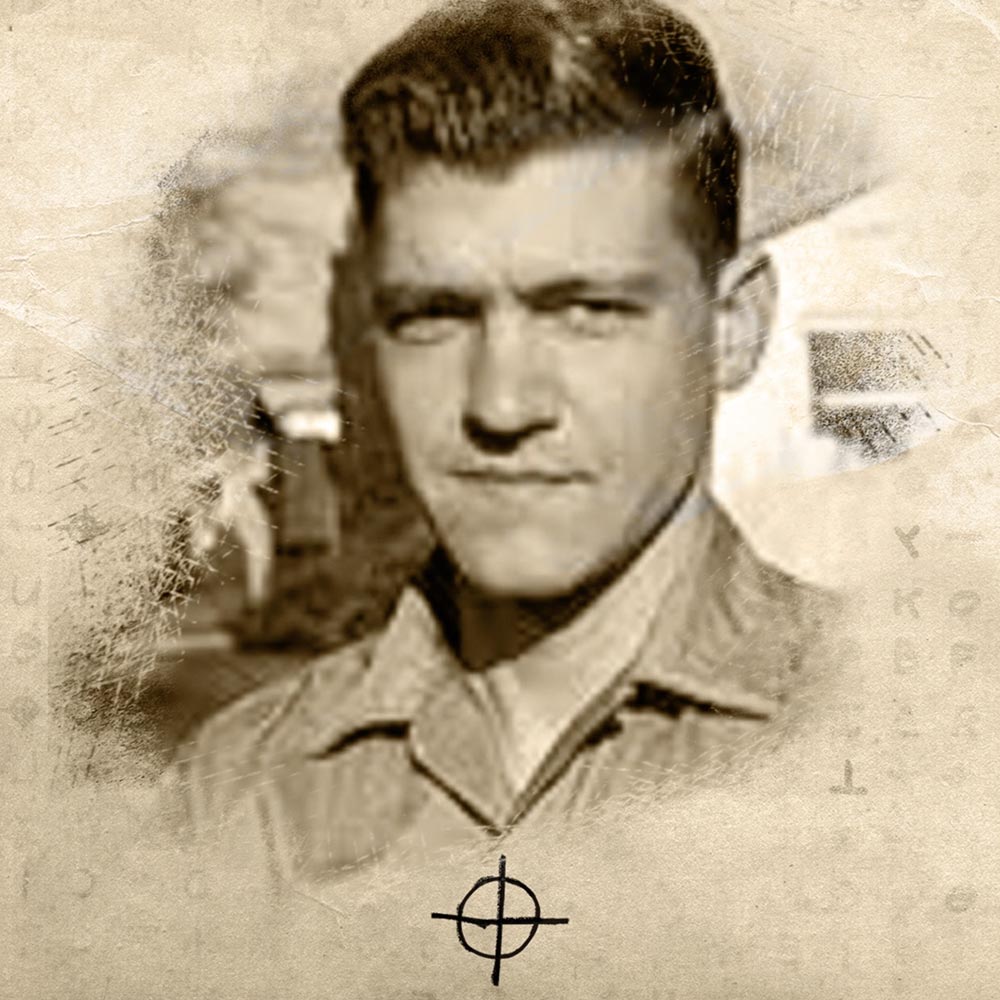
12 · Rabbit Holes
New theories bring new suspects. But for many independent investigators, those theories are truth.
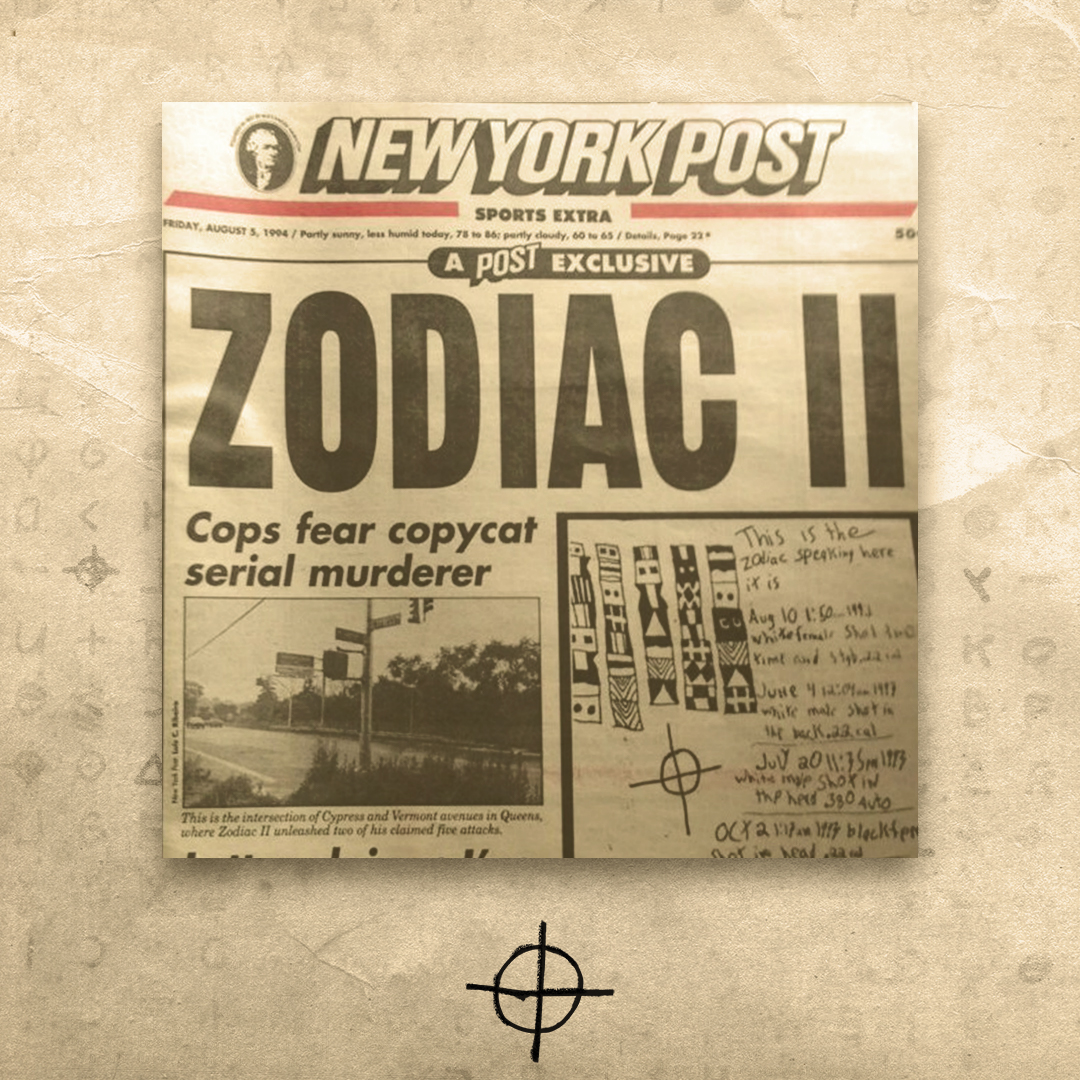
13 · Copycat
Fascination leads beyond obsession, as a new Zodiac emerges in New York City.
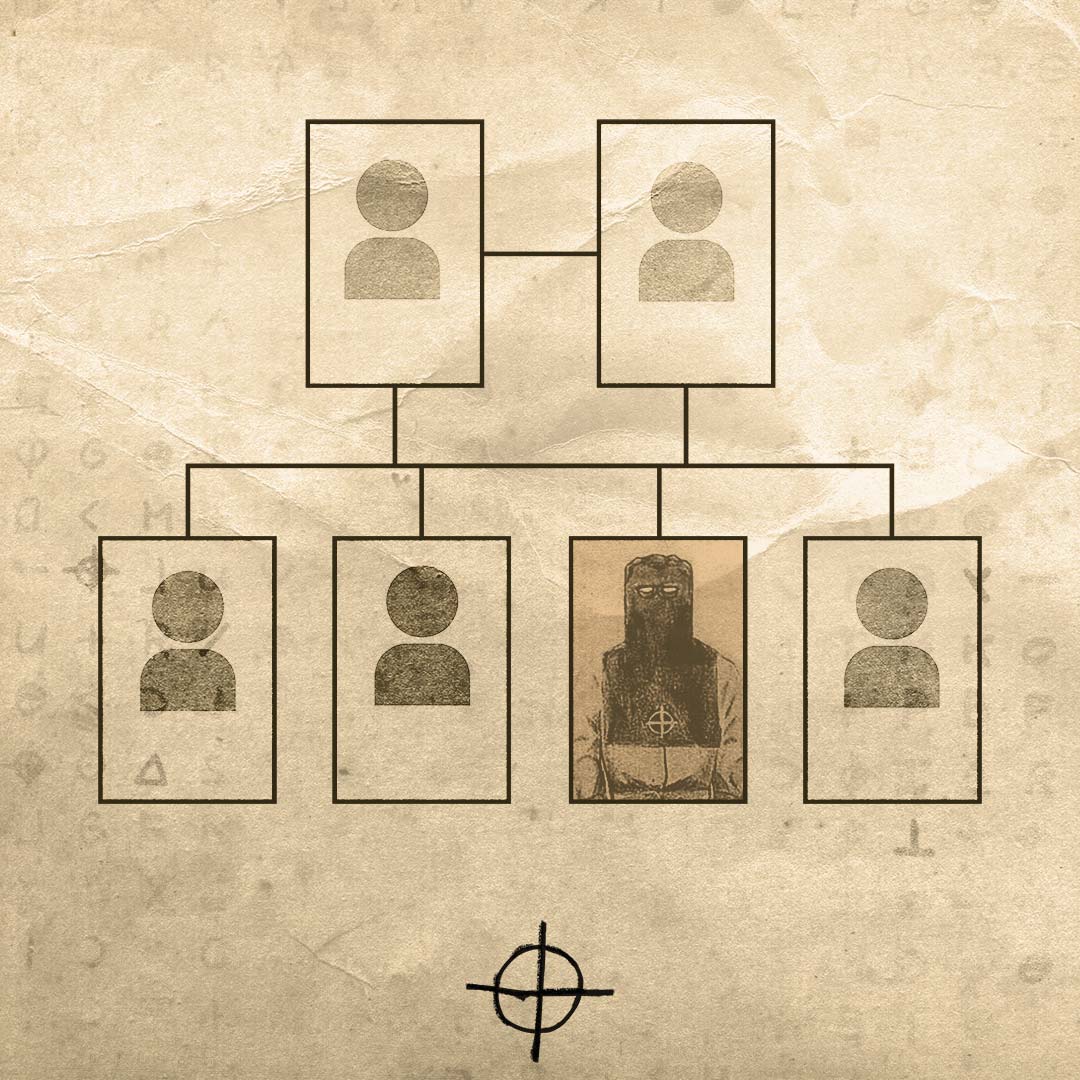
14 · Sequence
New technology brings fresh hope to the Zodiac case. But what if it’s still a dead end?
